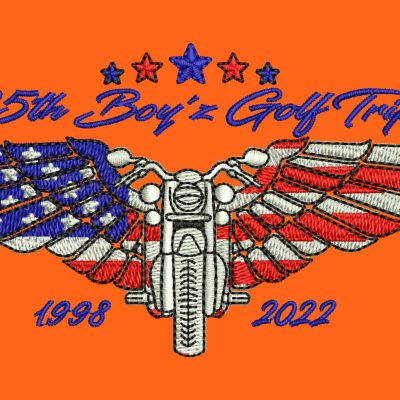Comprehensive Digitizing for Embroidery: From Style to Stitch
Comprehensive Digitizing for Embroidery: From Style to Stitch
Blog Article
Discover Different Kinds of Embroidery Digitizing Methods
Needlework digitizing has progressed considerably over the years, offering a myriad of methods to bring layouts to life in the digital world. The realm expands to more advanced methods like photorealistic needlework digitizing and the interesting realm of 3D embroidery digitizing.
Conventional Hand Embroidery Digitizing
Conventional hand needlework digitizing includes the procedure of converting elaborate hand-stitched styles right into digital formats for device embroidery. This technique calls for competent artisans to diligently assess the handmade style and then use specialized software to recreate it in an electronic layout. Each stitch, color, and information should be thoroughly translated to ensure that the essence of the original hand embroidery is maintained in the digital variation.
Among the essential obstacles of traditional hand embroidery digitizing is recording the ins and outs and nuances of the handmade design. Digitizing for Embroidery. Artisans need to possess a deep understanding of different needlework techniques, such as satin stitch, chain stitch, and French knots, to properly duplicate these strategies in the electronic realm. Furthermore, they need to have an eager eye for information to guarantee that the electronic style maintains the exact same level of virtuosity and craftsmanship as the initial hand-stitched piece
Punching Strategy
To effortlessly transition from typical hand embroidery digitizing to the punching method, artisans need to now concentrate on converting the intricate digital layouts into instructions that embroidery devices can translate. The punching technique entails utilizing specialized software to develop digital data which contain commands for the needlework machine to adhere to. This procedure needs a deep understanding of not simply the design itself however additionally the capabilities and restrictions of the needlework machine.

Auto-Digitizing Software Program Programs
Embroidery digitizing has been reinvented by the arrival of auto-digitizing software program programs, providing artisans with advanced devices to transform electronic layouts right into needlework equipment guidelines successfully. Auto-digitizing software programs use algorithms to analyze digital pictures or vector data and produce needlework layouts immediately. These programs permit quick and precise conversion of detailed layouts right into read this post here stitch patterns, saving effort and time for embroiderers.
One of the crucial benefits of auto-digitizing software my company is its straightforward user interface, making it available to both newbies and seasoned digitizers. These programs frequently include functions such as stitch editing and enhancing tools, string shade matching, and the capability to preview the last stitched design. Furthermore, auto-digitizing software program can deal with intricate layouts with multiple colors and complex details, creating high-grade embroidery data ideal for different garments and textile tasks.
While auto-digitizing software application offers benefit and performance, it is vital for users to comprehend the limitations of automated digitizing. Fine-tuning and hand-operated modifications might still be needed to attain the desired embroidery top quality, specifically when handling intricate or special designs. By leveraging the capabilities of auto-digitizing software program along with manual digitizing methods, craftsmens can improve their embroidery digitizing procedure and produce sensational embroidered items.
Photorealistic Needlework Digitizing
Utilizing innovative electronic imaging strategies, attaining photorealistic outcomes in needlework digitizing has become a sought-after skill amongst modern-day craftsmens. This strategy includes transforming high-resolution photos right into complex stitch patterns that very closely mimic the initial style, causing needlework pieces that exhibit natural information and deepness.
To attain photorealistic embroidery digitizing, artisans should possess an eager eye for detail and a complete understanding of how various stitch kinds and thickness can influence the final outcome. By thoroughly mapping out each color and shade in the picture, embroiderers can produce an electronic documents that overviews the needlework equipment to replicate the nuances of the original picture accurately.
Photorealistic embroidery digitizing is particularly prominent in producing personalized designs for apparel, home design, and art pieces where capturing the essence of a photograph or artwork is important. This method permits craftsmens to change memories, landscapes, pictures, and detailed basics artwork into sensational stitched work of arts that display a blend of standard workmanship and sophisticated modern technology.
3D Embroidery Digitizing
With the development of digital imaging techniques in achieving photorealistic lead to needlework digitizing, the expedition of 'D Needlework Digitizing' uses a new dimension to the complexities of style replication. 'D Needlework Digitizing' describes the three-dimensional digitizing method that adds depth and texture to embroidery layouts, creating a more realistic and visually appealing end product. This strategy utilizes software that simulates the result of light and shadow on the embroidery design, enhancing its total aesthetic influence.
Among the crucial advantages of 'D Needlework Digitizing' is its ability to make designs look even more natural and dynamic. By including deepness to the embroidery layout, the end product appears much more reasonable and exciting (Digitizing for Embroidery). In addition, this method permits more creative liberty in style execution, enabling embroiderers to experiment with various appearances and impacts that were previously challenging to achieve
Verdict

Report this page